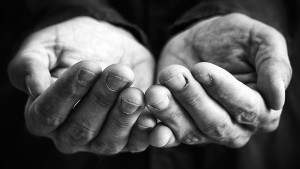This may sound like a paid advertisement, but it isn't.
I have found the perfect thing for fixing my imperfect carpentry and the uneven effects of weathering. It's called “No More Gaps.” It comes in a plastic, bullet-shaped tube that fits into a metal trigger-gun that squirts out a trail of the stuff under pressure. And it's just what the occasional handy person like me needs: a generically named filler-glue that describes exactly what we need for those cracks in our work.It may also be a useful metaphor for thinking about what is going on in our society—no more gaps.
For example, there used to be a natural difference and social distance between men and women. But not so much now. The gap between male behaviours and what were considered female behaviours has closed. They are not “no more,” but they are a lot less. For example, I once thought the smell of aftershave was a bit limp, but Old Spice, Ben York, Tabac, Brut and Stratos changed all that in the 1960s and 1970s. And now I wear Chanel (for men)! But who would have thought?
There also used to be great gulf between straight-heterosexual marriages and gay-homosexual partnering, but that too has closed up considerably. More and more, legislatures and law courts are signing into history edicts that recognise gay marriage and the rights that attend the status. And as they do, evidence comes to light that gay marriages are no happier than straight ones. Indeed, gay domestic violence and gay divorce are the latest new areas fascinating sociologists and urban anthropologists.
The gap between nationalities is being slowly closed too as multiculturalism takes effect all over the world—terrorism notwithstanding. The “great big melting pot” soul group Blue Mink sang about in the 1960s is becoming reality. But not everywhere, and not necessarily with ease. Racially tinged riots late last year in Paris and Sydney were a wake-up call to the idyllic self-conception of these very modern societies as truly enlightened, secular and race-blind. Suddenly everyone was asking, “What happened to the progressive multiculturalism that we assumed was ours?” The answer was a robust statement from the ghettos and from the beaches that the politicians who thought so were living in denial.
The closing gap between rich and poor has long been promised by capitalism, but remains stubbornly resistant to the filler-glue called “trickle-down economics.” In fact, the gap appears to be spreading, with little remedy in sight except perhaps for gracious and generous efforts of world saviours and last year's Time magazine People of the Year Bono (the humanitarian rocker from U2) and Bill Gates (of Microsoft) and his wife, Melinda. The root of the endemic gap between the world's rich and poor is found in the soil of perceived inequality of worth. No-one really believes in equality. As Bono wistfully recalled in a recent Rolling Stone magazine interview: “If we believed that these people in the developing world were equal, there is no way that we could allow 3000 Africans, mostly children, to die every day from mosquito bites while we have the medicines and technology that could save their lives” (February 2006).
Another stubborn gap remains between religions. Consider the gap between Protestants and Catholics. Predictions of closing this gap abounded in the post-World War II years as the UN and EU emerged in embryonic forms, as the first Catholic president Kennedy took office, as the charismatic revival took hold of Catholics, and as mutuality was reached on the doctrine of justification. But while the Catholic hierarchy has remained committed to its historic and narrow reading of personal and family morality and an exclusively male priesthood, the Protestants have gone off on their own merry dance denying the historicity of just about everything biblical, relativising every moral stricture, and liberalising every entry-gate into the faith communion.
Protestants have adopted human rights over divine rights to such an extent that they have totally reconstituted themselves into an entity that would be unrecognisable to their ideological ancestors, such as Wesley, Whitefield, Luther, Knox and Calvin. There are indeed “no more gaps” between secular Liberalism and contemporary majority Protestantism. But in other small corners of the Protestant tradition, “Fundamentalism”—as it is scornfully called—still lives across the divide between truth and error. Pockets of difference remain between traditional Protestants and the rest of their heritage, differences that still defy the gap-filler glue of postmodernism.
For these minority believers a vast distance still remains between good and evil, right and wrong, and they actively resist the climate of accommodation that is now preached from nearly every political and religious pulpit. They reject the lukewarmness that characterises our response to everything and accept their pariah-status for adopting a polarised view of life, of values and of the meaning of experience. For them, greed is not good, and there is no need to “just do it.”
They eschew the aggressive self-assertiveness of our age because they remember that the “meek will inherit the earth.” For these Christians, genuine religious experience cannot be packaged; it must be uniquely encountered and individually valued.
For this minority, there is a gap between humans and God that remains real. The snaky declaration in Eden that humans can, with more knowledge, evolve into God, is still a lie. A human being is not God, except for one God-man in whom there were “no more gaps,” Jesus Christ.
Their object is the same as Stephen Schwartz put to music 35 years ago in his inspirational and imaginative stage musical Godspell—“Oh, dear Lord, three things we pray: to see thee more clearly, to love thee more dearly, to follow thee more nearly, day by day, by day.”
A clearer daily vision of God exposes the distance between them and their God, but impresses them to love Him more dearly who first loved us to death on the cross. Their love for Him leads them to obedience to Him. A gap remains, but it no longer accuses them or denies them access to eternity.






